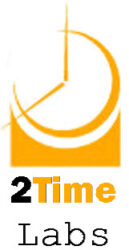As explained in the post on Time Demands, each Time Demand is made up of some kind of trigger, plus a commitment. For example, that sock lying in the corner represents a Time Demand with the trigger being a visual sighting of the sock, and the commitment perhaps being the desire to have a clean room.
A Time Demand is the basic element of the 2Time Management system.
The 2Time system is all about recognizing Time Demands for what they are and treating them in a very specific manner. They are the smallest elements of a time management system, but they need to be understood differently from the system as a whole.
In the book “Stumbling on Happiness“, Dan Gilbert states:
“In general, many of us have the mistaken idea that large numbers are like small numbers, only bigger. As such, we expect them to do more of what small numbers do, but not anything different. Continue reading “The Half-Life of Time Demands”


